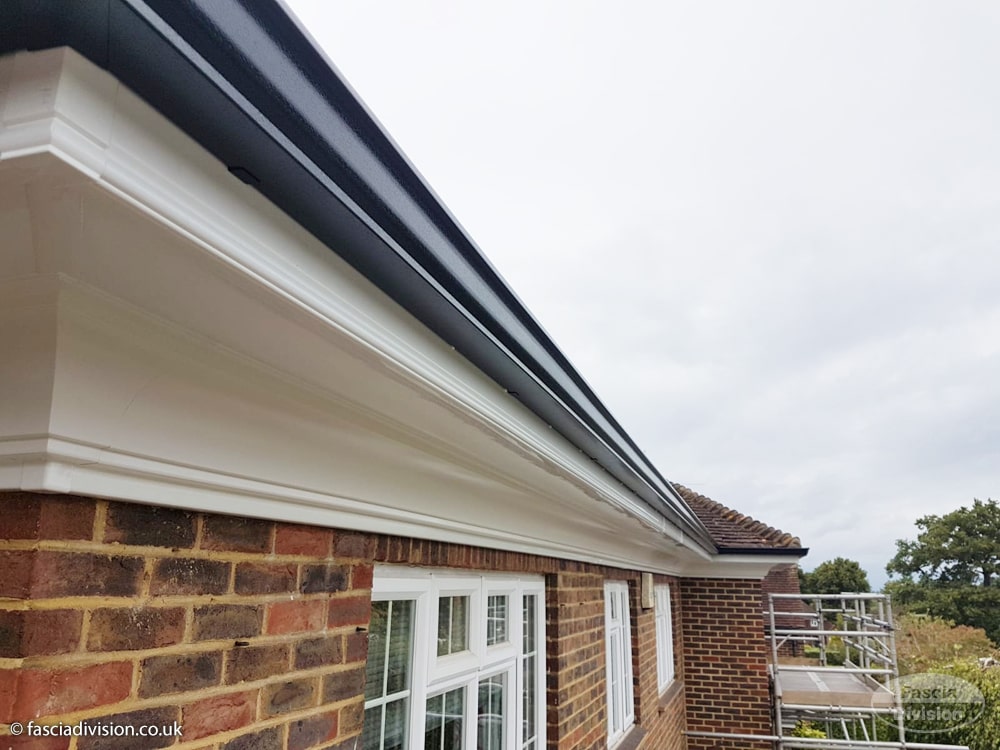soffit-and-cladding7736
soffit-and-cladding7736
Upvc Soffit Tools To Make Your Daily Life Upvc Soffit Trick That Should Be Used By Everyone Know
Understanding UPVC Soffit: A Comprehensive Guide
Introduction
The world of home building and remodelling is filled with myriad choices, and one such choice that property owners often face is concerning products for soffits. Amongst the different options offered, Unplasticized Polyvinyl Chloride (UPVC) has become a popular choice. This short article digs into what UPVC soffit is, its benefits, installation suggestions, maintenance, and more, offering a well-rounded understanding for those considering this option.
What is UPVC Soffit?
Soffit is the overhanging section of a roof that sits underneath the eaves. It is pivotal in supporting the roofing system while enhancing the home’s aesthetic appeal. Typically, soffits were made from timber, however with the advent of UPVC, homeowners now have a more durable and low-maintenance option. UPVC soffits are weatherproof, resistant to rot, and deal superior thermal insulation.

Secret Characteristics of UPVC Soffit
- Sturdiness: UPVC materials are resistant to the aspects and do not warp or weaken like wood.
- Low Maintenance: Unlike wooden soffits that need regular painting and dealing with, UPVC soffits are simple to tidy and keep.
- Adaptability: Available in different designs and colors, UPVC soffits can complement any architectural style.
- Insulation: UPVC offers exceptional thermal insulation homes, helping in energy conservation.
Benefits of UPVC Soffit
In picking UPVC soffits, property owners open many advantages:
-
Weather Resistance: UPVC soffits can withstand severe weather condition conditions– be it rain, snow, or sun– without damage.
-
Fire Resistance: UPVC is non-combustible, making it a more secure option for many house owners.
-
Cost-Effectiveness: Although the preliminary financial investment might be higher than traditional materials, the durability and reduced maintenance expenses typically make UPVC the more cost-effective option gradually.
-
Enhanced Aesthetics: UPVC soffits are available in numerous surfaces, permitting homeowners to pick styles that enhance their home’s look.
Table 1: Comparison of Soffit Materials
| Product | Resilience | Maintenance | Cost | Visual Options |
|---|---|---|---|---|
| UPVC | Really High | Low | Moderate | High (varied styles) |
| Wood | Moderate | High | Low-Medium | Moderate (limited colors) |
| Aluminium | High | Moderate | Medium-High | High (diverse finishes) |
| Vinyl | High | Low | Moderate | Moderate (some custom alternatives) |
Installation of UPVC Soffit
The installation of UPVC soffit can seem daunting, but breaking it down into workable actions can simplify the procedure. It is suggested to engage specialists for a smooth installation, but homeowners with DIY skills can follow these steps.
Steps for Installing UPVC Soffit
-
Measure the Area: Use a measuring tape to determine the lengths and areas where the soffit will be set up.
-
Select Materials: Choose UPVC soffit boards in the desired colors and styles, in addition to any necessary accessories like nails and brackets.
-
Prepare the Surface: Clean and prepare the location to guarantee optimum adhesion and fit.
-
Cut UPVC Boards: Use a saw to cut UPVC boards to the required lengths based on your measurements.
-
Install Soffit Boards: Begin attaching the boards from one end, ensuring they are level and flush.
-
Complete Edges: Use ending up boards to cover exposed edges for a clean appearance.
Table 2: Essential Tools for UPVC Soffit Installation
| Tool | Purpose |
|---|---|
| Measuring tape | For measurements |
| Saw | To cut UPVC boards |
| Level | To ensure boards are straight |
| Drill | For attaching screws/nails |
| Security Equipment | To protect while installing |
Maintenance of UPVC Soffit
One of the most substantial advantages of UPVC soffit is its low maintenance requirement. However, with any product, some care is still vital to extend its life-span.
Tips for Maintaining UPVC Soffit
- Routine Cleaning: Use a soft brush or fabric together with warm soapy water to clean up the soffits.
- Look for Damage: Periodically check for cracks, spots, or other damages, especially after serious weather.
- Seal Joints: Ensure all joints stay sealed to prevent leaks and water ingress.
- Prevent Harsh Chemicals: Do not utilize abrasive cleaners as these can damage the surface of the UPVC.
Often Asked Questions (FAQs)
Q1: Can UPVC soffit be painted?
A1: While it is technically possible to paint UPVC soffits, it is not suggested as the paint might not adhere well and may peel gradually. UPVC is available in different colors, eliminating the requirement for painting.
Q2: How long does UPVC soffit last?
A2: UPVC soffit can last over 20-30 years when properly preserved. Its resistance to rot and decay considerably contributes to its longevity.
Q3: Are UPVC soffits ecologically friendly?
A3: UPVC is recyclable, making it a more environmentally friendly alternative in contrast to lots of traditional products. However, the production process has a carbon footprint, so consideration of one’s environmental impact is necessary.
Q4: Is it necessary to aerate UPVC soffits?
A4: Yes, proper ventilation is crucial for preventing wetness buildup in the attic, which can cause mold and decay. Many UPVC soffit options include integrated ventilation features.
Picking UPVC soffit can substantially enhance a home’s look while supplying long-lasting durability and low maintenance. With the numerous benefits of this product, consisting of weather resistance, fire safety, and cost-effectiveness, house owners are motivated to consider it for their renovation or building projects. By comprehending the installation, maintenance, and advantages of UPVC soffits, people can make informed options that safeguard their home financial investments while enhancing their living spaces.



 Total Users : 4623
Total Users : 4623